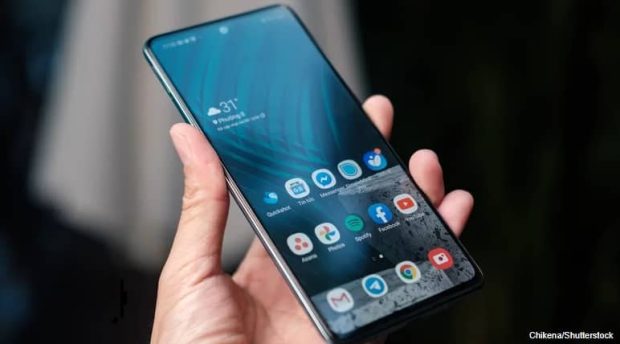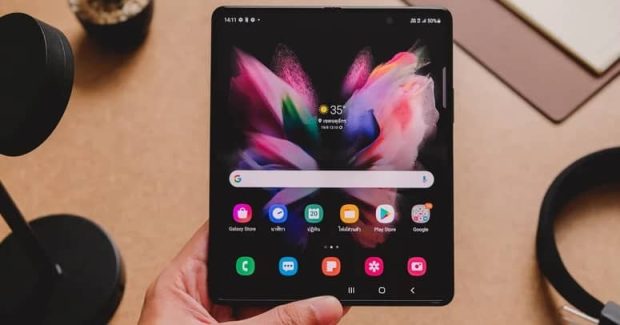May 25, 1402 at 16:06
In this article, we will compare Super AMOLED and Super LCD screens and learn about the features, advantages and disadvantages of each.
If you are looking to buy a device equipped with a display, whether it is a smart watch, mobile phone, monitor or television, you will probably come across terms that refer to the quality and capabilities of the screen. Two of the most common terms over the past decade to date are SuperAmoled and SuperLCD. Therefore, it is important to know about both types of displays, their features and their suitability to your needs.
SuperAmoled is an up-to-date technology for most consumers that offers brighter, more vivid colors. However, super LCDs also have their own advantages, one of which is the lower price. Thus, describing the specifications of both displays and comparing their most important features will help you make an informed purchase.
What is Super AMOLED display?

First, we will start by explaining the word AMOLED. This name has three components: AM (Active Matrix), O (Organic) and LED (Light Emitting Diode). The term Active Matrix refers to the technology used to control whether OLEDs are turned on or off to display the image. The second term, which is called Organic, refers to the light emitting compound in the display itself.
In fact, these terms describe improvements that make this type of display thinner, lighter, and brighter than conventional LED models. But what is the factor that distinguishes a Super AMOLED display from a normal sample? Primarily, their flashy marketing is noteworthy. Simply put, Super AMOLED is a marketing term for a type of AMOLED On-Cell Touch display manufactured by Samsung Display, the world’s largest manufacturer of these components.
In a Super AMOLED screen, a touch-sensitive layer is embedded. In comparison, conventional AMOLED displays have a touch-sensitive layer that is placed on the display as a separate panel.
What is a super LCD display?
Although you may not be familiar with the term Super LCD, you have probably heard of IPS LCD, which is a more common term for this display technology. Unlike OLED displays, where each pixel generates and emits its own light, liquid crystal displays rely on a backlight that is located below the screen’s pixels.
In this type of panel, images are produced by selectively blocking the light passing through certain pixels. This process is achieved by liquid crystals in the pixel, which are sandwiched between two polarizing filters. Before applying current to the liquid crystal layer, the background light passes through the first polarizing filter, through the liquid crystals, and then through the second polarizing filter.
However, after a current is applied, the liquid crystals move to a position where they block light from passing through the second polarizing filter, which prevents light from leaving the display in that area.
In an IPS panel, the liquid crystals are always horizontally aligned and moving along a screen to block light or let it through. IPS or TN displays rely on liquid crystals that twist rather than rotate along a plane.
IPS displays offer much better color reproduction and viewing angles than their TN counterparts, however they are more expensive and generally have lower contrast and refresh rates with higher latency.
Comparison of Super AMOLED with Super LCD; Visual attraction




Ushering in the era of Super AMOLED displays, these panels offer better viewing angles as they are slimmer than their Super LCD counterparts. This superiority is mainly due to the absence of a separate backlight along with the integration of the capacitive touch layer in the display itself. In addition, because each pixel produces its own light and, more importantly, black is achieved by completely turning off the LED instead of blocking the light passing through, Super AMOLED offers much better contrast and color saturation compared to Super LCD models. Gives.
The increased control means that Super AMOLED displays have a better color gamut and higher color saturation, although some people may not like this feature. Meanwhile, Super LCDs are not without their advantages. Since this type filters white light from the background light, they display colors with a more natural effect, especially in bright environments, which is largely the Achilles heel of Super AMOLEDs. SuperLCD panels can also produce sharper images than their AMOLED counterparts.
Long-term use




If your goal is to use the display for a long time, Super LCDs seem to last better. Despite higher energy consumption in certain conditions, they are less prone to problems such as burn-in and discoloration that Super AMOLED displays usually struggle with.
Both of these issues are related to the degradation of organic compounds present in OLED displays, including the SuperAmoled sample. The term screen burn-in occurs when certain pixels lose more performance than others due to continuous use. For example, this usually happens with the constant display of an app icon for consecutive days.
Meanwhile, color variation occurs due to natural differences in the lifetime of each sub-pixel type (red, blue, and green). Because white light is a combination of light from all three types, so if one type of pixel starts to disappear, the display will have problems displaying color. Meanwhile, blue pixels have the shortest lifespan and are the first pixels to fail and turn the display color yellow.
Comparison of Super AMOLED and Super LCD; Dimensions and price




Due to the reliance on backlighting or at least edge lighting on the underside or around the LCD, this type of display is thicker and heavier than Super AMOLED. So if a Super LCD panel is to be touch capable, it needs an additional touch sensitive layer on top of the existing display.
In contrast, since the touch elements are integrated into the Super AMOLED displays themselves and the pixels generate their own light, the need for backlighting is eliminated. As a result, their dimensions can be much more compact, to the extent that today we see curved or flexible examples of them in some devices, including foldable phones.
However, a more compact design also costs more. In general, Super AMOLED displays are more advanced than LCD technology, and for this reason, they are often used in mid-range to high-end smartphones. This is despite the fact that low-end phones are usually equipped with IPS LCD screens.

